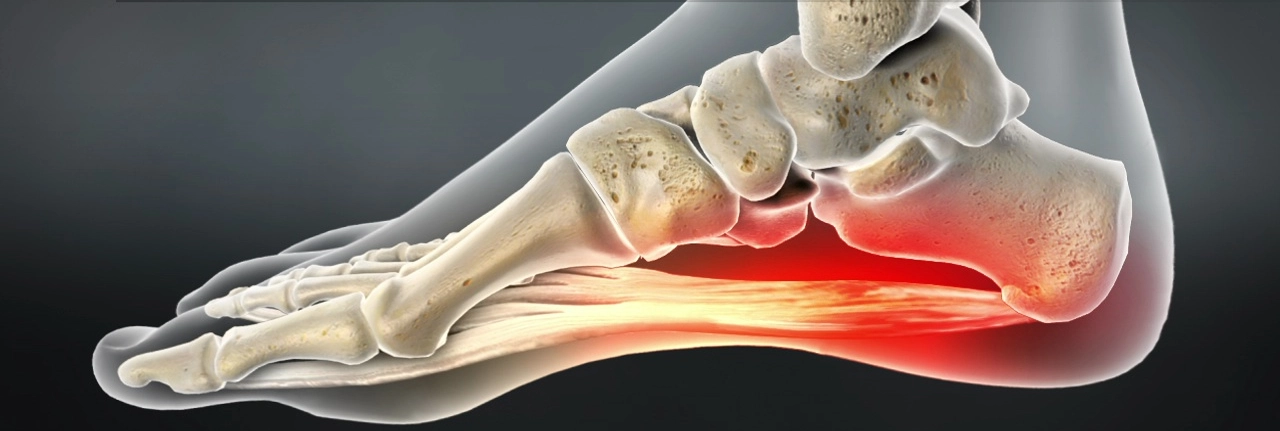Plantar fasciitis is sometimes referred jogger’s heel, tennis heel, or policeman’s heel. It can sometimes be associated with what is called heel spurs however they are not the same thing. Both Plantar fasciitis and heel spurs will affect 1 in 10 people at some point during their lifetime and is most common between 40 and 60 years of age.
Plantar fasciitis is mainly caused by overuse or strain of the plantar fascia, a thick band of tissue that runs along the bottom of the foot, connecting the heel to the toes and is characterized by:
- Pain in the heel or arch of the foot.
- Pain when taking the first steps in the morning.
- Pain when starting an activity after prolonged periods of rest.
- Pain worsening with activity or standing for extended periods.
- Tenderness along the bottom of the foot, particularly near the heel.
- Tightness in the Achilles tendon or calf muscles.
- In severe cases, swelling or a burning sensation.
Several factors contribute to Plantar fasciitis:
- Excessive Stress:
Activities like running, dancing, or long periods of standing increase strain on the plantar fascia. - Foot Structure
Flat feet or high arches can lead to abnormal weight distribution, causing irritation. - Tight Muscles
Tight calf or Achilles tendon muscles can increase tension in the foot. - Obesity
Excess weight places more pressure on the plantar fascia. - Improper Footwear
Wearing shoes with inadequate support or cushioning can exacerbate the condition
Calcaneal spurs
Calcaneal (heel) spurs occur when calcium deposits build up due to repetitive stress or strain on the foot, typically over several months. Spurs can be located at the back of the heel or under the sole (plantar heel spur) which is why the two conditions are often mistaken for each other. The spur itself is usually painless, but when it irritates surrounding tissues, it can cause discomfort, especially during walking or standing.
Primarily recommended for Plantar fasciitis, using our thin or mediumorthotic foot-beds and taking anti-inflammatory Factor 8 Joint Ease product can provide relief for both conditions.
In general to avoid plantar fasciitis, we recommend these preventive measures:
- Stretch Regularly: Stretch the calf muscles, Achilles tendons, and the plantar fascia to maintain flexibility and reduce tension on the foot.
- Wear Supportive Footwear: Choose shoes with good arch support, cushioning, and shock absorption, especially during activities like walking or running.
- Keep up your anti-inflammatory diet and include our Factor 8 Joint Ease supplement daily
- Use Orthotics: Our high quality orthotics can help distribute pressure evenly across the feet.
- Avoid Overuse: Gradually increase activity levels to avoid sudden strain on the feet, especially in high-impact activities.
- Maintain a Healthy Weight: Reducing excess weight can relieve pressure on the feet.
